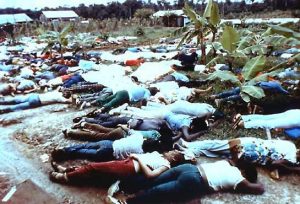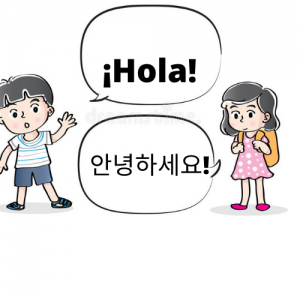In 1493, on his second voyage to the Americas, Christopher Columbus discovered Puerto Rico, an island that he named San Juan Bautista. On his first trip, Columbus, as we know, discovered La Española (Hispaniola), which is today the countries of Haiti and the Dominican Republic. In a failed attempt to reach La Española on his second trip, Columbus landed on Puerto Rico, where he was received by the Taíno Indians, who were of the same ethnic group as the people of La Española and the other islands in the Caribbean.1
Months after reaching the Island, the Spaniards started the process of colonizing the Taíno Indians, led by Juan Ponce De Leon, who was one of the conquistadors that came with Columbus. Later, in 1508, De Leon became the first governor of San Juan Bautista. During this process of colonization, the Taíno Indians did not show resistance because they believed the Spaniards were gods. The reason they saw the Spaniards as gods was because there had been a Taíno legend that spoke of a time when gods were going to rise from the water to give salvation to the Taíno. This legend facilitated the process of colonization for the Spaniards, since they did not encounter any native resistance. Within a short time they had created villages and colonies. By the beginning of the 1500’s, the Taíno natives were working in gold mines and plantations. In 1514, the Taíno decided to take matters into their own hands and rebel against their Spanish overlords. What resulted was one of the most brutal genocides in Latin American history. More than 25,000 Taíno Indians were murdered by the Spaniards on the Island of San Juan Bautista. This means that 85-90% of their population had been killed at the hands of the Spaniards. After the rebellion, the Spaniards noticed that the natives that had survived were not enough to fulfill their labor requirements. They decided to search for a new work force.2
After the massacre of 1514, the Spaniards noticed that they needed a new “work force,” as they called their slaves; so in 1518 they started importing African slaves from the Gulf of Guinea. The slaves started to reach the island later that year, and became the new “work force” of the Spaniards along with the small number of Taíno Indians that had survived the massacre. This caused more problems, since the Spaniards and the Africans brought a variety of diseases to the Island, such as small-pox and measles. Approximately two million Taíno Indians that lived on the islands of the Caribbean died from these diseases. By the late 1500’s there were no more Taíno Indians left on the island of San Juan Bautista; only the children of those who intermarried with the Spaniards and Africans survived. Of course, the Taíno, Africans, and Spaniards intermarried through time, and this is why Puerto Ricans today have such a diverse racial heritage; but the original Taíno racial group became extinct by around 1600. By that time the island of San Juan Bautista had become one of the most important colonies in the Caribbean. The Spaniards now had a way to export their products to the rest of the Caribbean and Latin America through this island, giving them an economical advantage. In less than thirty years the Spaniards took the Taíno land, men, women, and children, and virtually erased a whole population from the face of the earth. Most people consider Christopher Columbus as one of the greatest explorer to ever live, and as a hero of sorts, but have they taken into consideration the many civilizations in the Americas that have been affected by him? Not only the Taíno population, but also the Aztecs, the Incas, and many other societies throughout the Americas were affected significantly by this Columbian moment in history.3
- Roberto Marquez, “Sojourners, Settlers, castaways and creators: A recollection of Puerto Rico past and Puerto Rico present,” Massachusetts Review 36, no. 1 (1995): 94. ↵
- Robert M. Poole, “What Became Of The Taíno?” Smithsonian 42, no. 6 (October 2011): 58. ↵
- Byron Cannon, “West Indian Uprisings,” Salem Press Encyclopedia (January 2016): 583-586. ↵



64 comments
Danielle Stiles
4/13/2021…I am Spaniard 72% and Puerto Rican & 11% Taino Indian. Columbus brought many people from Spain including Jews. The King & Queen wanted everyone in Spain to give up their religions to be Catholic & ordered Jews to leave Spain. When coming to Puerto Rico the Jews people found by going to the highest mountains. They could keep their Jewish religion in order not to be of the Catholic faith. So those ships brought over many people good or bad gave the diseases to Taino Indians. Which the Taino Indians had no immune system for the disease that they brought over plus the Chinese for slavery.
Christobal Colon, which we call Columbus should not be celebrated on our calendar’s.
I also believe the Vikings where in the Carbbean first.
The reason Taino Indians originally where being used for there woman, slavery, plus being killed by infectious diseases.. Puerto Rican where slaved threw the years. So, they had to bring new people from West Africa to be slaves for farming, but in 1873 slavery was abolished in P.R.
I love & I am proud of the mixture of Puerto Ricans which includes the Spanish,Taino Indians, & Africanos. We come in all colors of eyes and skin tones.
Robert James
Christopher Columbus did discover the United States, by his discovery of Puerto Rico. But. the first European that we know to land on the U.S. mainland was Juan Ponce de Leon, who landed in Florida on April 2, 1513. He was not the first to sight it, however, as maps showing Florida appeared in 1502. And, others may have landed there before him, as he met a Native American in Florida who could somehow speak Spanish.
Cynthia Perez
Despite the article’s length it was still able to dive right into the central topic and expand on it. Talk about a betrayal though of spiritual beliefs. The Gods rising from the water which was believed to be this glorious experience for the Taino Indians ended up bringing a lot of devastation to them. As for Christopher Columbus, it’s still a shame we celebrate that day because he never really discovered these places, he just stumbled upon existing civilizations and wanted to claim them. Great article reflecting that.
Jacob Silva
For such a small article, a lot of information is packed in it. I think its articles like these that really highlight the truth about what Columbus really did when he arrived in America. For one people are finally realizing Columbus wasn’t the first to come across America and that he’s responsible for the horrendous acts towards the indigenous peoples.
Kimberly Parker
So many people hold Christopher Columbus on such a high pedestal, without even knowing everything he did to get the achievements that he did. I mean, so many deaths occurred when Christopher Columbus decided that he ruled the land that was previously the Taino Indians. More than half of the population was killed, making them no more different from the English.
Juan Arceo
Even with the article being relatively small, it was able to deliver on the topic at hand. Christopher Columbus is a name that even though did have some “importance”, the way in which these discoveries were achieved are questionable, such as the case with the Taino population in Puerto Rico and thus lead to him being viewed as a villain. Overall, I enjoyed the article.
Rosa Robledo Martinez
I really enjoyed that this article was short but it contained lots of important information. At the beginning I didn’t really understand the importance of Christopher Columbus and what he really did because mainly everyone says he didn’t discover anything. But after reading I learned a lot of what he did and the impact he has done.
Alexander Avina
This was able to pack in a lot of information into a relatively small article. I like how this was about a topic that isn’t talked about as much as other topics. I only had a general idea of this narrative, but reading this helped clear up a lot of information that I was unsure about. This was very well-written and there didn’t seem to be any wasted information within the article. It was truly enjoyable.
Kathryn Martinez
It’s interesting to see how nowadays people are beginning to protest against Christopher Columbus Day. People are now starting to talk about the deaths that occurred due to the arrival of Christopher Columbus and how it wasn’t right for the Spanish to colonize the land. We still see the effects on the Native population of America and the injustices that still haven’t been addressed. Christopher Columbus does not deserve to be praised.
Eliezer Leal
This story just goes to show the nature of humans, all we do is take. Over hundreds of years people have just taken from the world, taken to the point of extinction it happens with wild life just as it happens with resources. Its sad to hear stories of tribes going extinct just because they rebel against unfair treatment.
Tomas Mucha
It is difficult to judge through the 21st century lens. Cristóbal was a person of his times. The indigenous also enslaved each other. Imagine in a future two thousand years from now how they will view the mass killing of babies at alters of abortion clinics. I will add also with many monies received from governments of the people. I do not judge the Conquerors of the New World as heart breaking as it reads.